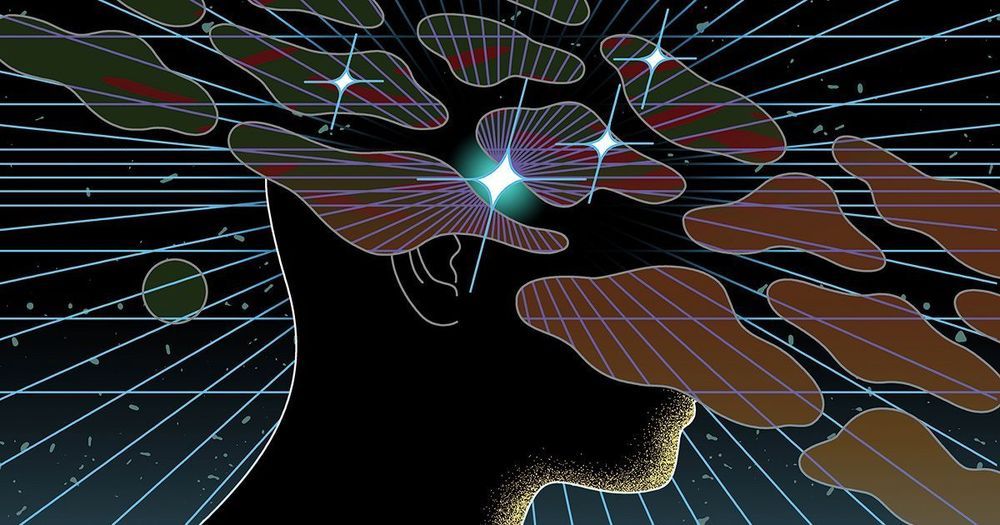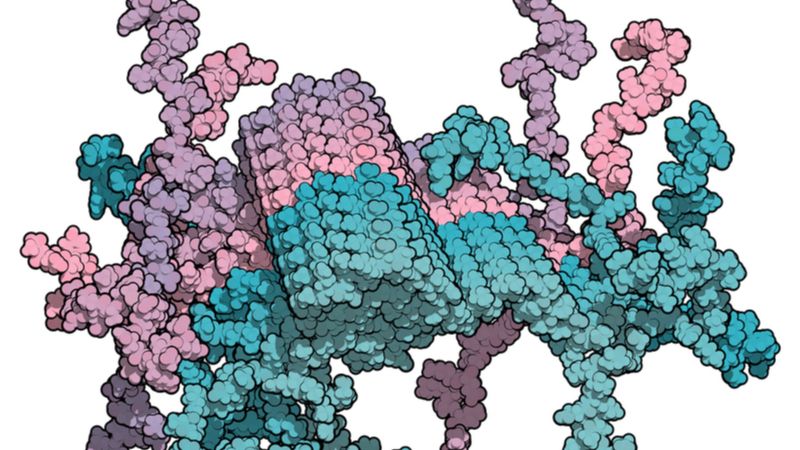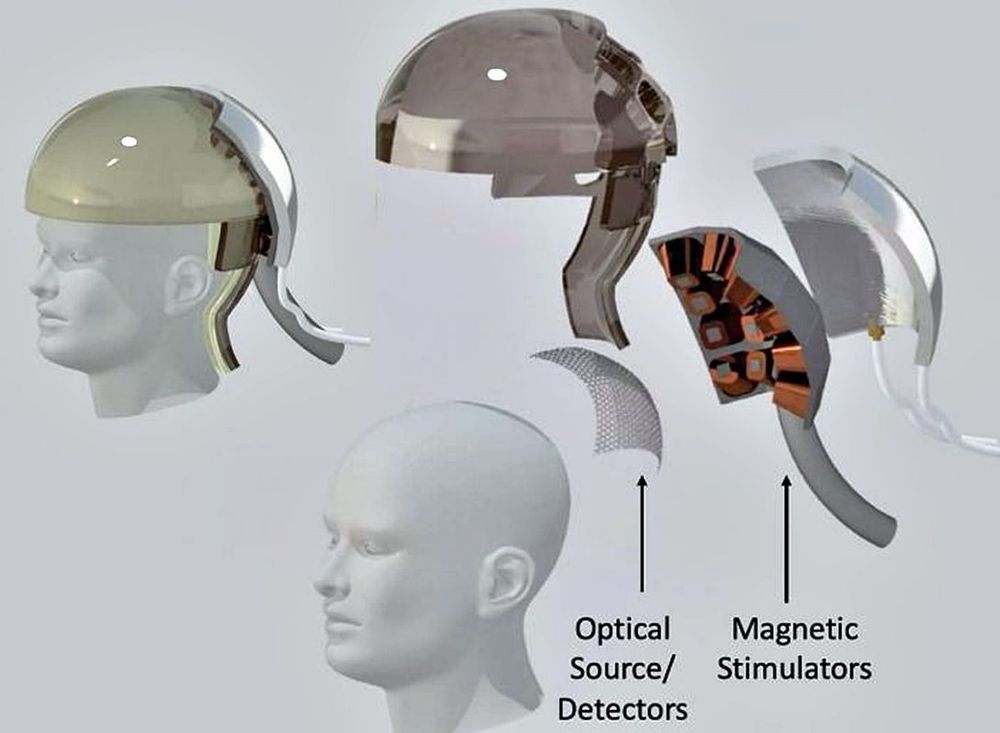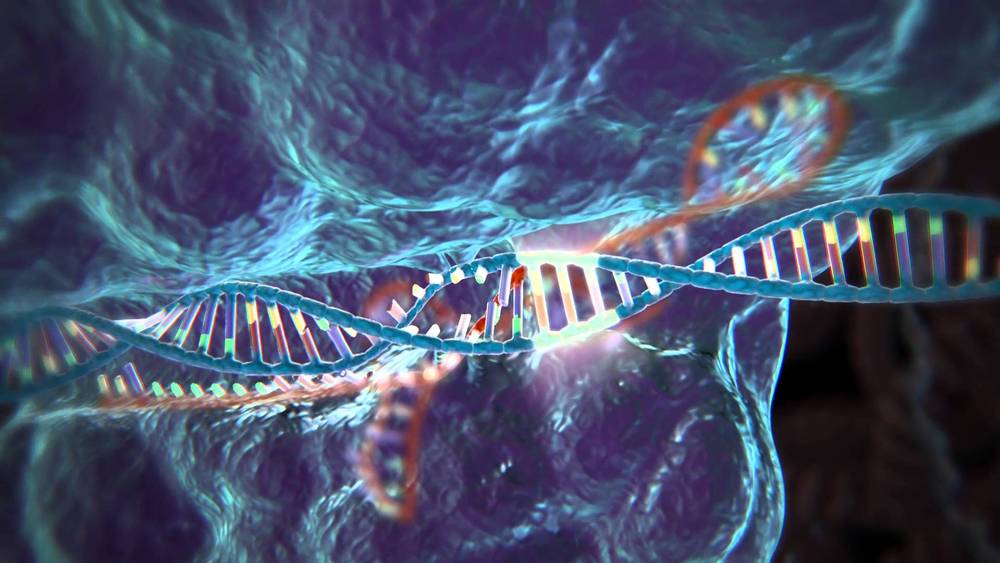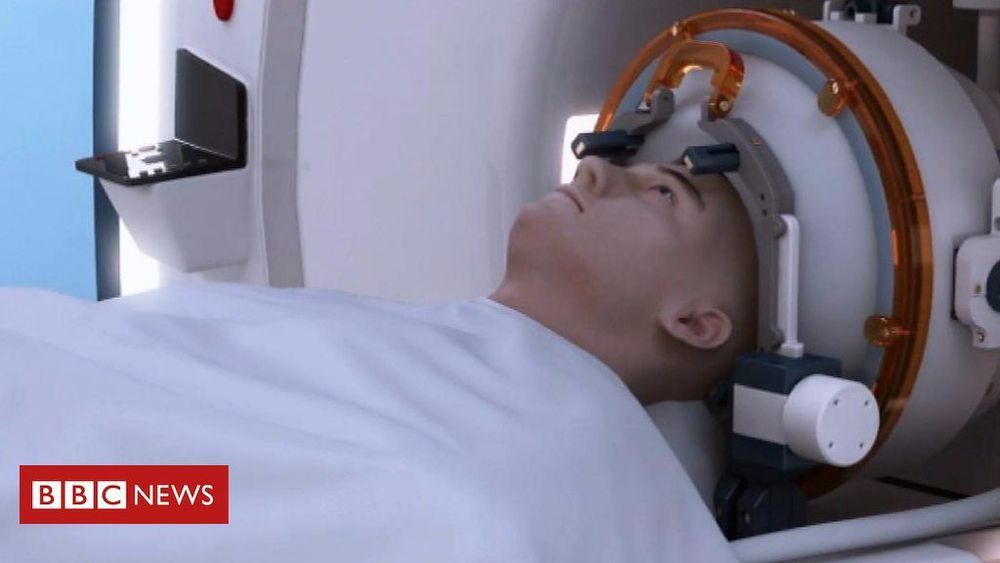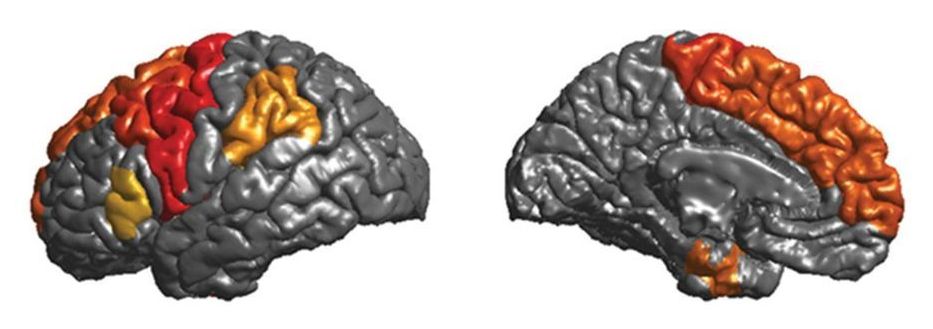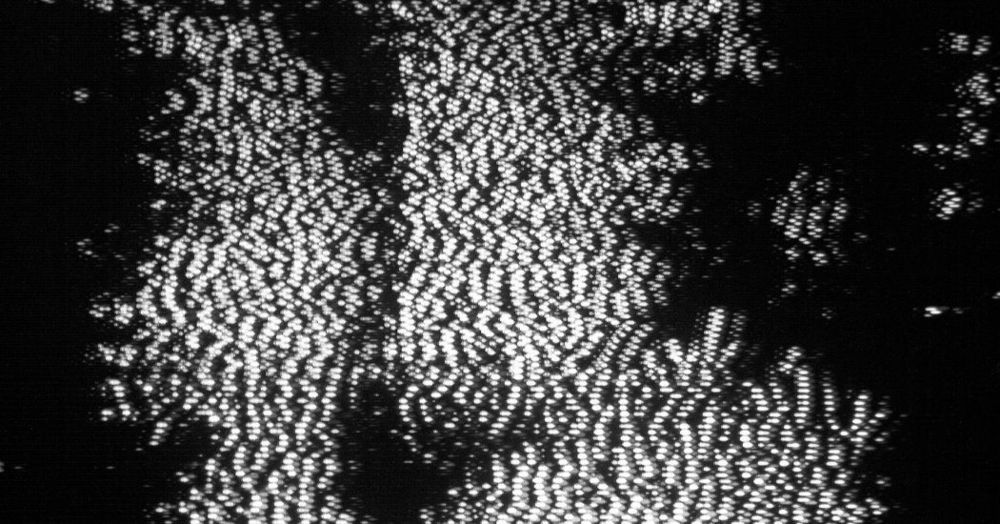Archive for the ‘neuroscience’ category: Page 726
Jun 13, 2019
Breaking Down α-Synuclein Aggregates
Posted by Steve Hill in categories: biotech/medical, neuroscience
Today, we want to point out a new publication that recently appeared in the Science Translational Medicine journal, as its authors have discovered a new mechanism by which the brain protects itself from the harmful α-synuclein protein aggregates associated with Parkinson’s and that may open the door to new therapies against these conditions.
To understand where these harmful protein aggregates come from, we should take a look at how proteins are created and what goes wrong during the process of proteostasis.
Jun 13, 2019
New Tech Could Allow Blind People To See Through The Eyes Of Others
Posted by Carse Peel in categories: biotech/medical, neuroscience
This fantastic project will involve sharing visual images between two brains. It will read the vision of a sighted person and transfer the images this person sees into the brain of a blind person “telepathically” in less than 1/20th of a second.
A team of neuroengineers has begun working on a headset or a helmet that directly links the human brain to machines without the need for surgery. This headset and the technologies that power it will enable this telepathic visual sharing.
Jun 13, 2019
CRISPR-Cas9 Therapy May Suppress Aging
Posted by Quinn Sena in categories: biotech/medical, genetics, life extension, neuroscience
Age is a leading risk factor for a number of conditions such as heart disease, cancer, and Alzheimer’s disease among others, such conditions make a real need for development of anti-aging therapies urgent. Salk Institute researchers may have developed a new gene therapy to help decelerate the aging process, as published in the journal Nature Medicine.
CRISPR-Cas9 genome editing therapy has been shown by the Salk Institute team to suppress the accelerated aging observed in mice with Hutchinson-Gilford Progeria syndrome; and provided insight into the molecular pathways involved in accelerated aging, and how to reduce toxic proteins via gene therapy.
Having an early onset and fast progression progeria is a severe form of degenerative disorder caused by LMNA gene mutations; signs of accelerated aging include DNA damage, cardiac dysfunction, and dramatically shortened lifespan. LMNA genes produce lamin A and lamin C inside a cell, progeria shifts production of lamin A to progerin which is a toxic shortened form of lamin A that accumulates with age and becomes exacerbated with the condition.
Jun 13, 2019
Brain surgery using sound waves
Posted by Quinn Sena in categories: biotech/medical, neuroscience
Doctors in London have used sound waves to successfully operate deep inside the brain.
They treated a man from Cornwall who suffered from uncontrollable tremors in his right hand.
The ultrasound machine Exablate Neuro, is produced by Insightec, a technology firm based in Israel. Their graphic explains how it works.
Jun 13, 2019
The world’s largest set of brain scans are helping reveal the workings of the mind and how diseases ravage the brain
Posted by Quinn Sena in categories: biotech/medical, neuroscience
ENIGMA consortium’s probe of many brain disorders finds common structural changes in diverse kinds of epilepsy.
Jun 13, 2019
Ubiquitous Patterns: As Above, So Below | Video
Posted by Alex Vikoulov in categories: cosmology, neuroscience, particle physics
From the synapses that connect billions of neurons in the brain to the filaments of dark matter that link galactic superclusters, there’s a fractal reiteration across the magnitude of scales akin to the Mandelbrot fractal set. The mathematics behind the Mandelbrot set, which is derived from a very simple underlying formula, makes me think that its intricate fractal chaos and stunningly beautiful design can’t help but leave a feeling that there’s something larger than life going on here, that you are staring right at some ineffable cosmic mystery. https://www.ecstadelic.net/top-stories/ubiquity-of-patterns-in-nature #patterns #fractals #fractality #SyntellectHypothesis #FiveParadigms #MindsEvolution #FractalPatterns #EmergentPatterns #AsAboveSoBelow #UbiquitousPatterns #FractalGeometry #SacredGeometry #MandelbrotSet #MTheory #MultiFractality
In Nature, we find patterns, designs and structures from the most minuscule particles, to expressions of life discernible by human eyes, to the greater cosmos. These inevitably follow geometrical archetypes, platonic solids, some call it sacred geometry, which reveal to us the essence of each form and its vibrational resonances. They are also symbolic of the underlying holistic principle of inseparability of the part and the whole.
It is this principle of oneness underlying all geometry that permeates the architecture of all form in its myriad diversity. This principle of interconnectedness, inseparability and unity provides us with a continuous reminder of our relationship to the whole, a blueprint for the mind to contemplate the sacred foundation of all things created.
Continue reading “Ubiquitous Patterns: As Above, So Below | Video” »
Jun 12, 2019
Should You Add a Microchip to Your Brain?
Posted by Paul Battista in categories: computing, neuroscience
Jun 11, 2019
Neuroscience shows that 50-year-olds can have the brains of 25-year-olds if they sit quietly and do nothing for 15 minutes a day
Posted by Paul Battista in category: neuroscience
Neuroscientist Sara Lazar, of Mass General and Harvard Medical School, started studying meditation by accident. She sustained running injuries training for the Boston Marathon, and her physical therapist told her to stretch. So Lazar took up yoga.
“The yoga teacher made all sorts of claims, that yoga would increase your compassion and open your heart,” said Lazar. “And I’d think, ‘Yeah, yeah, yeah, I’m here to stretch.’ But I started noticing that I was calmer. I was better able to handle more difficult situations. I was more compassionate and open hearted, and able to see things from others’ points of view.”
Eventually, she looked up the scientific literature on mindfulness meditation (a category into which yoga can fall). She found the ever-increasing body of evidence that shows that meditation decreases stress, depression, and anxiety, reduces pain and insomnia, and increases quality of life.
Jun 11, 2019
Scientists Reverse The Age of White Blood Cells In A Female Human Being – They’re Now 20 Years Younger
Posted by Paul Battista in categories: biotech/medical, life extension, neuroscience
Elizabeth Parris, the CEO of Bioviva USA Inc, has become the very first human being to successfully, from a biological standpoint, reverse the age of her white blood cells, thanks to her own company’s experimental therapies. Bioviva utilizes intramural and extramural peer-reviewed research to create therapies for age-related diseases (Parkinson’s, Alzheimer’s, cancer, heart-disease), and now, they have reversed 20 years of ‘telomere shortening’ in a human for the first time.
Telomeres are short segments of DNA that cap the ends of every chromosome and act as a protective feature against wear and tear, which occurs naturally as the human body ages. As we age, these telomeres become shorter and shorter as our cells continue to divide more and more. Eventually they become too short to protect the chromosome, which is what causes our cells to malfunction and age related diseases to start setting in.
In September of last year, the 44 year old volunteered to partake in two of her own company’s experimental gene therapies; one intended to battle stem cell depletion, which happens when we age and leads to various age related diseases, and the other intended to protect against loss of muscle mass with age.
